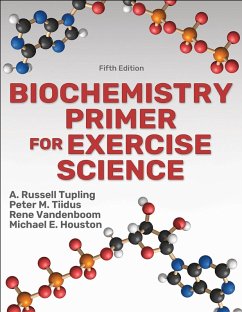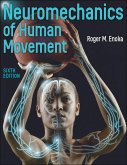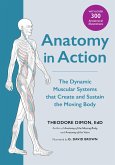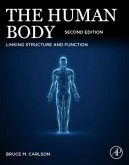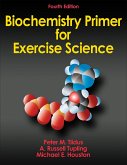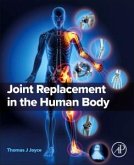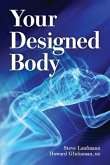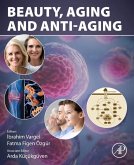- Broschiertes Buch
- Merkliste
- Auf die Merkliste
- Bewerten Bewerten
- Teilen
- Produkt teilen
- Produkterinnerung
- Produkterinnerung
Offers a molecular view of exercise physiology by linking nutrition, metabolism and biochemistry to real-world athletic performance. Key topics include muscle contraction, fatigue, gene regulation and signaling pathways, with updated visuals and sidebars clarifying how cellular processes drive adaptation and exercise responses.
Andere Kunden interessierten sich auch für
![Neuromechanics of Human Movement Neuromechanics of Human Movement]() Roger M. EnokaNeuromechanics of Human Movement139,99 €
Roger M. EnokaNeuromechanics of Human Movement139,99 €![Anatomy in Action Anatomy in Action]() Theodore Dimon Jr.Anatomy in Action34,99 €
Theodore Dimon Jr.Anatomy in Action34,99 €![The Human Body The Human Body]() Carlson, Bruce M., MD, PhD (Department of Cell Professor and DeveloThe Human Body170,99 €
Carlson, Bruce M., MD, PhD (Department of Cell Professor and DeveloThe Human Body170,99 €![Biochemistry Primer for Exercise Science Biochemistry Primer for Exercise Science]() Peter M. TiidusBiochemistry Primer for Exercise Science67,99 €
Peter M. TiidusBiochemistry Primer for Exercise Science67,99 €![Joint Replacement in the Human Body Joint Replacement in the Human Body]() Joyce, Thomas J, PhD (School o Professor of Orthopaedic EngineeringJoint Replacement in the Human Body166,99 €
Joyce, Thomas J, PhD (School o Professor of Orthopaedic EngineeringJoint Replacement in the Human Body166,99 €![Your Designed Body Your Designed Body]() Steve LaufmannYour Designed Body24,99 €
Steve LaufmannYour Designed Body24,99 €![Beauty, Aging and Antiaging Beauty, Aging and Antiaging]() Beauty, Aging and Antiaging134,99 €
Beauty, Aging and Antiaging134,99 €-
-
-
Offers a molecular view of exercise physiology by linking nutrition, metabolism and biochemistry to real-world athletic performance. Key topics include muscle contraction, fatigue, gene regulation and signaling pathways, with updated visuals and sidebars clarifying how cellular processes drive adaptation and exercise responses.
Produktdetails
- Produktdetails
- Verlag: Human Kinetics Publishers
- Fifth Edition
- Seitenzahl: 360
- Erscheinungstermin: 30. Juni 2025
- Englisch
- Abmessung: 217mm x 276mm x 24mm
- Gewicht: 1050g
- ISBN-13: 9781492593607
- ISBN-10: 1492593605
- Artikelnr.: 74064180
- Herstellerkennzeichnung
- Libri GmbH
- Europaallee 1
- 36244 Bad Hersfeld
- gpsr@libri.de
- Verlag: Human Kinetics Publishers
- Fifth Edition
- Seitenzahl: 360
- Erscheinungstermin: 30. Juni 2025
- Englisch
- Abmessung: 217mm x 276mm x 24mm
- Gewicht: 1050g
- ISBN-13: 9781492593607
- ISBN-10: 1492593605
- Artikelnr.: 74064180
- Herstellerkennzeichnung
- Libri GmbH
- Europaallee 1
- 36244 Bad Hersfeld
- gpsr@libri.de
A. Russell Tupling, PhD, is a professor and chair of the department of kinesiology and health sciences at the University of Waterloo in Ontario, Canada. His research program, which is funded by the Natural Sciences and Engineering Research Council of Canada, is dedicated to the understanding of the regulation of sarcoplasmic reticulum (SR) function in muscle and understanding how defects in the function of SR proteins that occur with oxidative stress contribute to fatigue, weakness, and disease. Tupling has published over 110 peer-reviewed publications in scholarly journals and over 185 conference abstracts based on his research. In 2010, he received the Award of Excellence in Graduate Supervision from the University of Waterloo. Tupling is a member of the American Physiological Society and the Canadian Society for Exercise Physiology (CSEP). He was invited to give the inaugural Mike Houston Tutorial Lecture in Skeletal Muscle at the CSEP conference in 2009. Peter Tiidus, PhD, is the dean of the faculty of applied health science at Brock University in Ontario, Canada. He has authored more than 95 refereed publications and presented his research in numerous lectures and conference presentations. His research focuses on the effects of hormones such as estrogen on muscle damage, inflammation, and repair as well as the influence of treatment interventions on muscle recovery from damage and physiological responses. In recognition of his years of contribution to exercise physiology, Tiidus was made a fellow of the Canadian Society for Exercise Physiology (CSEP) in 2023. He is also a member of the American College of Sports Medicine (ACSM) and European College of Sports Science (ECSS). Rene Vandenboom, PhD, is a professor in the department of kinesiology at Brock University in Ontario, Canada. His research has focused on excitation-contraction coupling and the mechanics of skeletal muscle contraction. Vandenboom has published more than 50 peer-reviewed articles in scholarly journals, many on the topic of myosin phosphorylation and force potentiation in skeletal muscle. An avid weight lifter, runner, and ball hockey player, he extolls the value of exercise across the lifespan. Michael E. Houston, PhD (1941-2008) received his undergraduate training in biochemistry from the University of Toronto and his PhD in biochemistry from the University of Waterloo. A superb athlete and lifelong exercise fanatic, he was able to integrate his training in biochemistry with his love of exercise science and to forge a career as a teacher and scientist in the field of kinesiology. During his 40-year career, he authored more than 100 refereed publications and taught courses on the biochemistry of exercise to many undergraduate and graduate students. In 2003, he was presented with the Honour Award from the Canadian Society for Exercise Physiology in acknowledgment of his lifetime contribution to research and education in exercise science. Houston was the author of the first three editions of Biochemistry Primer for Exercise Science. This fifth edition, which is built on his body of work, still incorporates a major portion of his third edition. Dr. Houston passed away in 2008.
Tribute to Michael E. Houston
Part I. Proteins and Enzymes: The Basis of Biochemistry
Chapter 1. Amino Acids, Peptides, and Proteins
Nature of Amino Acids
Characteristics of Peptides
Structure of Proteins
Proteomics
Chapter Wrap-Up
Chapter 2. Enzymes
Enzymes as Catalysts
Rates of Enzymatic Reactions
Enzyme Cofactors
Classification of Enzymes
Oxidations and Reductions
Protein Transporters
Regulation of Enzyme Activity
Measurement of Enzyme Activity
Chapter Wrap-Up
Chapter 3. Gene Transcription and Protein Synthesis
DNA and RNA
Transcription
Posttranscriptional Modifications of RNA
Translation
Posttranslational Processing of Polypeptides
Protein Degradation
Regulation of Gene Expression in Exercise and Training
Chapter Wrap-Up
Part II. Metabolism: Regulation and Adaptation to Exercise and Training
Chapter 4. Energy Systems and Bioenergetics
Energy Requirements of Skeletal Muscle
Energy-Rich Phosphates
Energy Systems
Bioenergetics
Chapter Wrap-Up
Chapter 5. Oxidative Phosphorylation
Overview of Metabolism
Mitochondria
Citric Acid Cycle
Electron Transport Chain
Coupled Phosphorylation
Regulation of Oxidative Phosphorylation
Quantification of Redox Reactions
Oxidants and Antioxidants
Chapter Wrap-Up
Chapter 6. Carbohydrate and Related Metabolism
Carbohydrates
Cellular Uptake of Glucose
Phosphorylation of Glucose
Glycolysis
Glycogen Metabolism
Lactate Metabolism
Oxidation of Cytoplasmic NADH
Gluconeogenesis
Pentose Phosphate Pathway
Signaling Pathways
Carbohydrate, Exercise Performance, and Fatigue
Chapter Wrap-Up
Chapter 7. Lipid Metabolism
Types of Lipids
Fat Storage and Metabolism
Oxidation of Fatty Acids
Oxidation of Ketone Bodies
Synthesis of Fatty Acids
Fat as Fuel for Exercise
Metabolism During Exercise: Fat Versus Carbohydrate
Adipose Tissue as an Endocrine Tissue
Cholesterol
Chapter Wrap-Up
Chapter 8. Amino Acid and Protein Metabolism
Overview of Amino Acid Metabolism
Degradation of Amino Acids
Urea Cycle
Fate of Amino Acid Carbon Skeletons
Amino Acid Metabolism During Exercise
Additional Roles for Amino Acids
Dietary Protein, Amino Acids, and Muscle Mass
Chapter Wrap-Up
Appendix. Answers to Review Questions
Part I. Proteins and Enzymes: The Basis of Biochemistry
Chapter 1. Amino Acids, Peptides, and Proteins
Nature of Amino Acids
Characteristics of Peptides
Structure of Proteins
Proteomics
Chapter Wrap-Up
Chapter 2. Enzymes
Enzymes as Catalysts
Rates of Enzymatic Reactions
Enzyme Cofactors
Classification of Enzymes
Oxidations and Reductions
Protein Transporters
Regulation of Enzyme Activity
Measurement of Enzyme Activity
Chapter Wrap-Up
Chapter 3. Gene Transcription and Protein Synthesis
DNA and RNA
Transcription
Posttranscriptional Modifications of RNA
Translation
Posttranslational Processing of Polypeptides
Protein Degradation
Regulation of Gene Expression in Exercise and Training
Chapter Wrap-Up
Part II. Metabolism: Regulation and Adaptation to Exercise and Training
Chapter 4. Energy Systems and Bioenergetics
Energy Requirements of Skeletal Muscle
Energy-Rich Phosphates
Energy Systems
Bioenergetics
Chapter Wrap-Up
Chapter 5. Oxidative Phosphorylation
Overview of Metabolism
Mitochondria
Citric Acid Cycle
Electron Transport Chain
Coupled Phosphorylation
Regulation of Oxidative Phosphorylation
Quantification of Redox Reactions
Oxidants and Antioxidants
Chapter Wrap-Up
Chapter 6. Carbohydrate and Related Metabolism
Carbohydrates
Cellular Uptake of Glucose
Phosphorylation of Glucose
Glycolysis
Glycogen Metabolism
Lactate Metabolism
Oxidation of Cytoplasmic NADH
Gluconeogenesis
Pentose Phosphate Pathway
Signaling Pathways
Carbohydrate, Exercise Performance, and Fatigue
Chapter Wrap-Up
Chapter 7. Lipid Metabolism
Types of Lipids
Fat Storage and Metabolism
Oxidation of Fatty Acids
Oxidation of Ketone Bodies
Synthesis of Fatty Acids
Fat as Fuel for Exercise
Metabolism During Exercise: Fat Versus Carbohydrate
Adipose Tissue as an Endocrine Tissue
Cholesterol
Chapter Wrap-Up
Chapter 8. Amino Acid and Protein Metabolism
Overview of Amino Acid Metabolism
Degradation of Amino Acids
Urea Cycle
Fate of Amino Acid Carbon Skeletons
Amino Acid Metabolism During Exercise
Additional Roles for Amino Acids
Dietary Protein, Amino Acids, and Muscle Mass
Chapter Wrap-Up
Appendix. Answers to Review Questions
Tribute to Michael E. Houston
Part I. Proteins and Enzymes: The Basis of Biochemistry
Chapter 1. Amino Acids, Peptides, and Proteins
Nature of Amino Acids
Characteristics of Peptides
Structure of Proteins
Proteomics
Chapter Wrap-Up
Chapter 2. Enzymes
Enzymes as Catalysts
Rates of Enzymatic Reactions
Enzyme Cofactors
Classification of Enzymes
Oxidations and Reductions
Protein Transporters
Regulation of Enzyme Activity
Measurement of Enzyme Activity
Chapter Wrap-Up
Chapter 3. Gene Transcription and Protein Synthesis
DNA and RNA
Transcription
Posttranscriptional Modifications of RNA
Translation
Posttranslational Processing of Polypeptides
Protein Degradation
Regulation of Gene Expression in Exercise and Training
Chapter Wrap-Up
Part II. Metabolism: Regulation and Adaptation to Exercise and Training
Chapter 4. Energy Systems and Bioenergetics
Energy Requirements of Skeletal Muscle
Energy-Rich Phosphates
Energy Systems
Bioenergetics
Chapter Wrap-Up
Chapter 5. Oxidative Phosphorylation
Overview of Metabolism
Mitochondria
Citric Acid Cycle
Electron Transport Chain
Coupled Phosphorylation
Regulation of Oxidative Phosphorylation
Quantification of Redox Reactions
Oxidants and Antioxidants
Chapter Wrap-Up
Chapter 6. Carbohydrate and Related Metabolism
Carbohydrates
Cellular Uptake of Glucose
Phosphorylation of Glucose
Glycolysis
Glycogen Metabolism
Lactate Metabolism
Oxidation of Cytoplasmic NADH
Gluconeogenesis
Pentose Phosphate Pathway
Signaling Pathways
Carbohydrate, Exercise Performance, and Fatigue
Chapter Wrap-Up
Chapter 7. Lipid Metabolism
Types of Lipids
Fat Storage and Metabolism
Oxidation of Fatty Acids
Oxidation of Ketone Bodies
Synthesis of Fatty Acids
Fat as Fuel for Exercise
Metabolism During Exercise: Fat Versus Carbohydrate
Adipose Tissue as an Endocrine Tissue
Cholesterol
Chapter Wrap-Up
Chapter 8. Amino Acid and Protein Metabolism
Overview of Amino Acid Metabolism
Degradation of Amino Acids
Urea Cycle
Fate of Amino Acid Carbon Skeletons
Amino Acid Metabolism During Exercise
Additional Roles for Amino Acids
Dietary Protein, Amino Acids, and Muscle Mass
Chapter Wrap-Up
Appendix. Answers to Review Questions
Part I. Proteins and Enzymes: The Basis of Biochemistry
Chapter 1. Amino Acids, Peptides, and Proteins
Nature of Amino Acids
Characteristics of Peptides
Structure of Proteins
Proteomics
Chapter Wrap-Up
Chapter 2. Enzymes
Enzymes as Catalysts
Rates of Enzymatic Reactions
Enzyme Cofactors
Classification of Enzymes
Oxidations and Reductions
Protein Transporters
Regulation of Enzyme Activity
Measurement of Enzyme Activity
Chapter Wrap-Up
Chapter 3. Gene Transcription and Protein Synthesis
DNA and RNA
Transcription
Posttranscriptional Modifications of RNA
Translation
Posttranslational Processing of Polypeptides
Protein Degradation
Regulation of Gene Expression in Exercise and Training
Chapter Wrap-Up
Part II. Metabolism: Regulation and Adaptation to Exercise and Training
Chapter 4. Energy Systems and Bioenergetics
Energy Requirements of Skeletal Muscle
Energy-Rich Phosphates
Energy Systems
Bioenergetics
Chapter Wrap-Up
Chapter 5. Oxidative Phosphorylation
Overview of Metabolism
Mitochondria
Citric Acid Cycle
Electron Transport Chain
Coupled Phosphorylation
Regulation of Oxidative Phosphorylation
Quantification of Redox Reactions
Oxidants and Antioxidants
Chapter Wrap-Up
Chapter 6. Carbohydrate and Related Metabolism
Carbohydrates
Cellular Uptake of Glucose
Phosphorylation of Glucose
Glycolysis
Glycogen Metabolism
Lactate Metabolism
Oxidation of Cytoplasmic NADH
Gluconeogenesis
Pentose Phosphate Pathway
Signaling Pathways
Carbohydrate, Exercise Performance, and Fatigue
Chapter Wrap-Up
Chapter 7. Lipid Metabolism
Types of Lipids
Fat Storage and Metabolism
Oxidation of Fatty Acids
Oxidation of Ketone Bodies
Synthesis of Fatty Acids
Fat as Fuel for Exercise
Metabolism During Exercise: Fat Versus Carbohydrate
Adipose Tissue as an Endocrine Tissue
Cholesterol
Chapter Wrap-Up
Chapter 8. Amino Acid and Protein Metabolism
Overview of Amino Acid Metabolism
Degradation of Amino Acids
Urea Cycle
Fate of Amino Acid Carbon Skeletons
Amino Acid Metabolism During Exercise
Additional Roles for Amino Acids
Dietary Protein, Amino Acids, and Muscle Mass
Chapter Wrap-Up
Appendix. Answers to Review Questions

